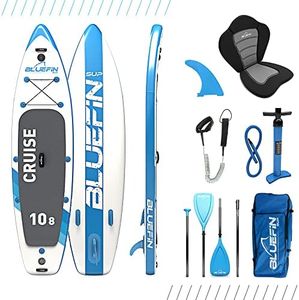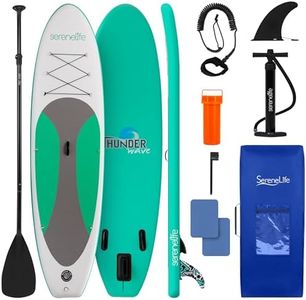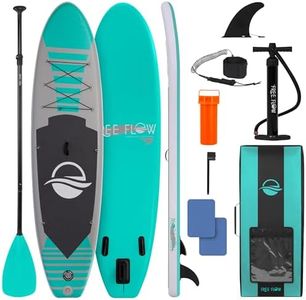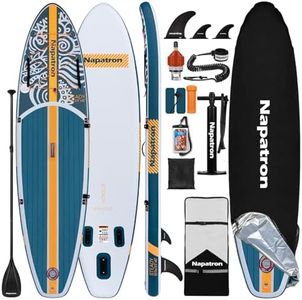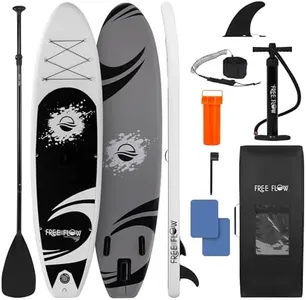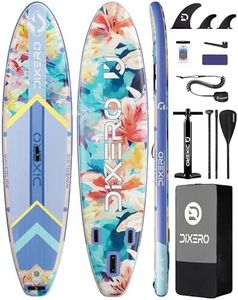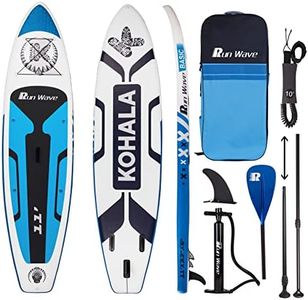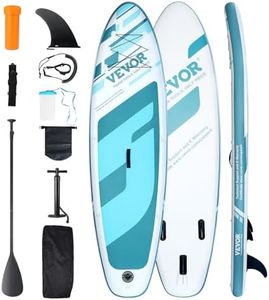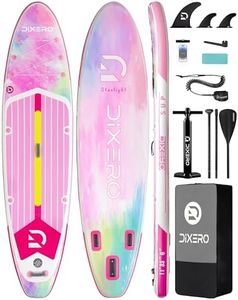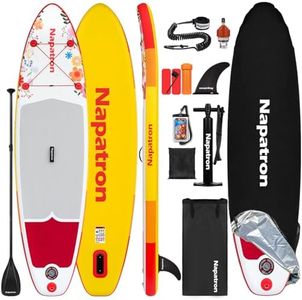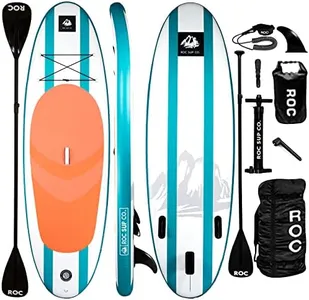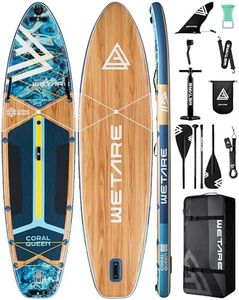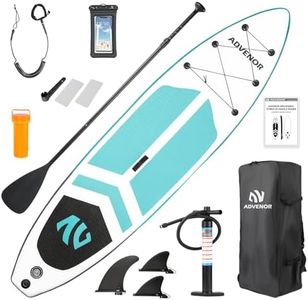We Use CookiesWe use cookies to enhance the security, performance,
functionality and for analytical and promotional activities. By continuing to browse this site you
are agreeing to our privacy policy
10 Best Paddle Boards For Beginners
From leading brands and best sellers available on the web.Buying Guide for the Best Paddle Boards For Beginners
Choosing your first paddle board should be about matching the board to your personal needs, level of experience, and the kind of water activity you plan to enjoy. As a beginner, it’s important to prioritize boards that offer stability, ease of use, and durability rather than focusing on advanced features meant for professionals. Understanding the main specifications of paddle boards will help you make an informed decision so you can feel confident and safe on the water.Board LengthBoard length refers to how long the paddle board is from nose to tail. Longer boards, typically those over 10 feet, glide better and are usually more stable, which is ideal for beginners. Shorter boards, under 10 feet, are more maneuverable and faster to turn, making them better suited for kids or experienced users who want to surf waves. For most beginners, a board between 10 and 11 feet is a balanced choice, offering stability and enough speed for learning without feeling unwieldy.
Board WidthThe width of the board is crucial for stability. Wider boards, usually those 30 inches or more, are steady and less likely to tip over, making them best for novices. Narrower boards, below 30 inches, can move faster but are less stable and harder for first-timers to balance on. If you're new to paddle boarding or plan to paddle in calm waters like lakes, picking a board that’s 31 to 34 inches wide will help you feel more secure and confident as you learn.
Board ThicknessBoard thickness impacts the board’s volume and how much weight it can support. Thicker boards, often between 5 and 6 inches thick, can hold more weight and remain more rigid, which helps beginners maintain balance and stay above water. Thinner boards sit lower in the water and may flex more, making them less ideal for those who are just starting. Most beginners will be happiest with a 5- or 6-inch-thick board, which supports a wide range of body types and offers reliable stability.
Material (Inflatable vs. Solid)Paddle boards come in two main types: inflatable and solid (usually made of foam/epoxy). Inflatable boards are softer, lightweight, easy to transport, and durable against bumps, making them excellent for beginners or those with limited storage space. Solid boards perform slightly better on the water and are more responsive, but they are heavier and require more care during transport. If you have limited space, want easy storage, or need a board for travel, inflatables are ideal, while solid boards suit those who will keep the board near the water.
Weight CapacityWeight capacity indicates how much combined load (rider and gear) the board can safely float without losing performance. Beginners should always pick a paddle board with a weight capacity that’s at least 20% higher than their body weight, plus any gear they plan to bring. Undershooting the weight limit makes the board wobbly and harder to control, so always check this rating to ensure smooth paddling and better balance.
Board Shape (Planing vs. Displacement Hull)The shape of the board’s hull determines how it moves in the water. Planing hulls are flat and wide, similar to surfboards, and are great for general use, stability, and casual paddling—perfect for most beginners. Displacement hulls have a pointed nose and move efficiently through water, which is ideal for speed and long-distance touring but less stable for someone still learning. If you’re just starting, stick with a planing hull for easier balance and maximum versatility.
